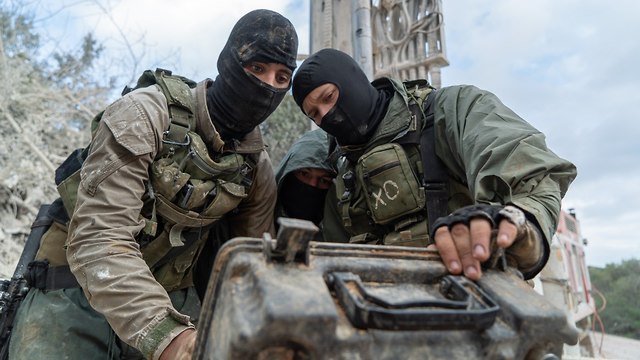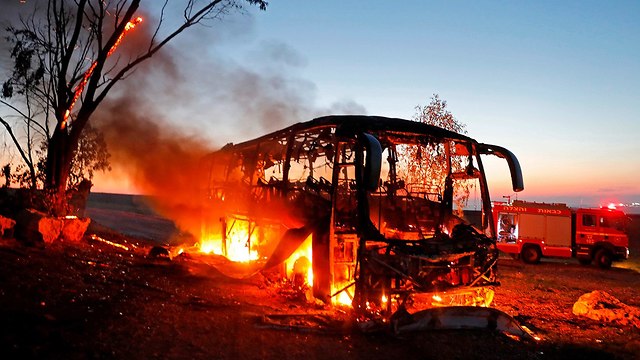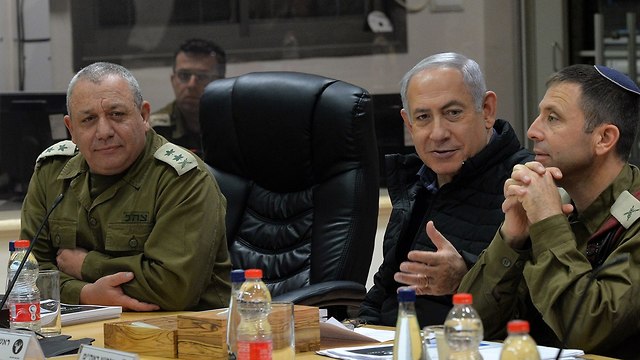On the backdrop of this, there's the fierce hatred towards him on social media and in the comment sections of news websites, the likes of which no IDF chief before him has seen. It originates in two incidents that happened during his tenure: the first is the Elor Azaria affair, and his choice to stick to his values, which polls show was not a popular choice; the second is his handling of Gaza terrorism over the past eight months. It's true that Eisenkot's tenure was far from perfect, but the hatred directed as someone who has served the state for 40 years should concern us all. He doesn't deserve this, and neither do we.
A true evaluation of an IDF chief's tenure can only be done years after the dust settles, but initial conclusions can be drawn. On the northern front, in the fight against Iranian military entrenchment, the outgoing IDF chief has completed his mission. His predecessor Benny Gantz began this war-between-wars, and Eisenkot took it to the next level, achieving great results thanks to accurate intelligence and an excellent Air Force—two branches of the IDF that are far superior to its infantry.
This success is likely what made Eisenkot in recent days to lift the veil of ambiguity surrounding Israel's attacks in foreign countries, an ambiguity the IDF has been zealously maintaining during his years at its helm. In interviews published in the foreign media over the weekend, Eisenkot boasted of attacks on "thousands of targets without claiming responsibility"—comments the likes of which he hasn't made before. In the West Bank, he dealt correctly with the wave of terrorism and led a policy—which has proven itself—to differentiate between the Palestinian population and the terrorists, despite pressure from ministers to impose collective punishment on the Palestinians. In the Gaza Strip, he could take credit for accelerating the construction of the underground obstacle on the border as well as the border fence, and mostly for thwarting the Hamas tunnel threat, making it near irrelevant compared to what the terror group had planned for its next conflict with Israel.
IDF troops uncovering Hezboolah tunnels on the Israel-Lebanon border (Photo: IDF Spokesperson's Unit)
There were also mishaps: The poor operational conduct of the forces of the Netzah Yehuda Battalion in the Ramallah area; a Hamas anti-tank missile hit a bus that had been carrying soldiers along the Gaza border, which only miraculously did not lead to a major disaster; and the failure of the classified operation in Khan Yunis in November that led to the death of an officer.

An IDF bus burning after it was hit by an anti-tank missile near the Gaza border in November 2018 (Photo: AFP)
But the main problem during Eisenkot's term - which is unrelated to the operational sphere, but no less important - is the issue of motivation. The motivation to serve in combat units reached an unprecedented low during his tenure. Even the motivation for enlisted service is constantly in decline; it might be harder to measure, but senior officers in the General Staff are quite vocal about the fact that the new model for service has been catastrophic in terms of the quality of personnel remaining in the army, and it will be many years before this can be rectified. And we haven't even touched on the damning June 2018 report by the IDF ombudsman, who harshly criticized the military's readiness.
Eisenkot's inner circle is touting the fact that Israel did not go to war during his tenure an achievement. But the main task of the chief of staff is not to prevent war, but to win a them and to prepare the army properly for the next one.
The many battles of Gadi Eisenkot : http://bit.ly/2D7XhPS

No comments:
Post a Comment